In today’s digital landscape, email marketing plays a crucial role in the success of any online business. For WooCommerce store owners, implementing an effective email marketing strategy is essential to increase revenue, expand their customer base, and foster strong customer connections.
With the right tools and techniques, you can automate WooCommerce emails based on shopping behavior, enhance customer loyalty, and boost sales.
This comprehensive guide will walk you through the world of WooCommerce email marketing, covering everything from the types of emails you can send to best practices and top plugins for automation.
By the end of this article, you’ll be equipped with the knowledge and tools to create successful email campaigns that drive results for your WooCommerce store.
Contents
5 Benefits of WooCommerce Email Marketing
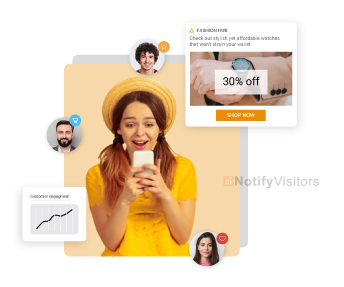
WooCommerce email marketing offers numerous benefits for online retailers. By leveraging the power of direct communication with your audience, you can increase customer engagement, conversions, and loyalty.
Here are some key advantages of implementing a robust email marketing strategy for your WooCommerce store:
- Increased Customer Engagement: Email allows you to keep your customers engaged by providing relevant updates, product information, and special offers. Regular communication through email fosters a stronger relationship with your audience, leading to increased engagement and brand loyalty.
- Higher Conversions: Personalized and targeted emails have the power to drive conversions. By customizing your WooCommerce emails based on customer segments, you can encourage them to complete purchases and take advantage of special offers. Marketing automation for WooCommerce further streamlines the process by incorporating techniques like abandoned cart reminders and time-sensitive offers.
- Improved Customer Loyalty: Email marketing plays a crucial role in nurturing customer loyalty. By regularly communicating with your customers, you can build stronger relationships over time, encourage repeat business, and turn customers into brand advocates.
- Cost-Effectiveness: Compared to other marketing channels, email marketing is generally more cost-effective. It offers a high return on investment (ROI) due to its ability to reach a targeted audience with minimal overhead costs.
- Announcements and Updates: Email marketing allows you to efficiently share important announcements, new product launches, and updates with your customer base. This ensures that your customers are always well-informed and engaged with your brand.
Types of WooCommerce Emails

To effectively engage your customers throughout their shopping journey, it’s important to understand the different types of WooCommerce emails you can send.
While WooCommerce itself provides default emails for order confirmations and notifications, customizing these emails requires the use of third-party tools or plugins.
Here are some key types of emails you can send to keep your customers engaged:
- Welcome Email: A welcome email is sent to new customers who have created an account on your WooCommerce store. It’s an opportunity to make a positive first impression, introduce your brand, and provide any necessary information or special offers.
- Order Follow-Up Email: After a customer places an order on your WooCommerce store, a follow-up email can be sent to provide details about the order, shipping updates, and estimated delivery dates. This helps keep your customers informed and reduces the need for them to reach out for updates.
- Abandoned Cart Recovery Email: If a customer adds products to their cart but leaves your store without completing the purchase, an abandoned cart recovery email can be sent to remind them about their abandoned items and offer incentives to encourage them to complete the purchase.
- Product-Specific Follow-Up Email: After a customer purchases a specific product, you can send a follow-up email to provide additional information, usage tips, and related product recommendations. This helps to maximize the value of the customer’s purchase and encourage repeat business.
- Product Review Request Email: Asking customers to leave reviews for the products they have purchased is a valuable strategy for social proof and building trust. Sending a product review request email can help generate positive reviews and increase customer engagement.
- Win-Back Emails: For customers who haven’t made a purchase in a while, win-back emails can be sent to re-engage them with your store. These emails often include special offers, discounts, or personalized recommendations to entice customers to return.
- Newsletter Emails: Newsletters provide a regular communication channel to share updates, promotions, and valuable content with your subscribers. They help keep your audience engaged and informed about your brand and products.
- Thank You Emails: Sending thank you emails after a customer has completed a purchase is a great way to show appreciation and build a positive relationship. These emails can also include personalized recommendations or discounts for future purchases.
These are just some examples of the types of emails you can send as part of your WooCommerce email marketing strategy.
The key is to tailor your emails to specific customer segments and provide valuable and relevant content to drive engagement and conversions.
5 WooCommerce Email Marketing Strategies
Now that you understand the benefits and types of WooCommerce emails, it’s time to dive into effective strategies for implementing a successful email marketing campaign for your WooCommerce store.
The following sections will guide you through the essential steps to building your email list, choosing a marketing platform, automating your email campaigns, ensuring compliance with regulations, and analyzing and improving your campaigns.
a) Building Your Email List
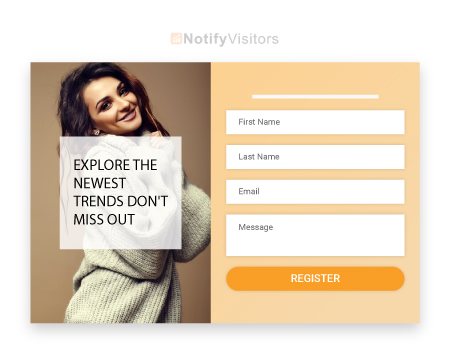
Building an email list is the first step towards implementing a successful email marketing strategy. Here are some key strategies to grow your email list:
- Opt-in Forms: Place clear and easy-to-fill opt-in forms on your website’s homepage, blog posts, and checkout pages. Consider using headers, footers, and pop-ups to capture visitors’ attention and encourage them to subscribe.
- Subscription Incentives: Offer incentives to encourage visitors to subscribe to your email list. This can include exclusive discounts, access to premium content, early product releases, birthday or anniversary offers, and product samples.
- Segmentation: Divide your email list into smaller groups based on customer preferences, demographics, and shopping behavior. This allows you to send targeted and personalized emails to each segment, increasing the effectiveness of your campaigns.
b) Choosing a Marketing Platform

Choosing the right email marketing platform is crucial for the success of your WooCommerce email campaigns. Consider the following criteria when selecting a marketing platform:
- Ease of Use: Look for a user-friendly interface that allows you to easily create and manage your email campaigns.
- Automation: Check if the platform offers automation features, such as triggered emails based on customer actions or personalized product recommendations.
- Segmentation: Ensure that the platform allows you to segment your email list based on customer attributes and behaviors, allowing for targeted and personalized campaigns.
- Templates: Access to a library of attractive email templates can save you time and effort in designing visually appealing emails.
- Analytics: Look for detailed campaign performance insights, such as open rates, click-through rates, and conversion rates, to measure the effectiveness of your email campaigns.
- Integration: Confirm that the platform integrates seamlessly with WooCommerce, allowing for easy synchronization of customer data and order information.
- Customer Support: Good customer support is crucial in case you encounter any issues or need assistance with your email marketing campaigns.
- Scalability: Consider the growth potential of the platform and whether it can accommodate your future needs as your business expands.
- Affordability: Balance the features and capabilities of the platform with your budget to ensure a cost-effective solution.
c) Automating Your Email Campaigns
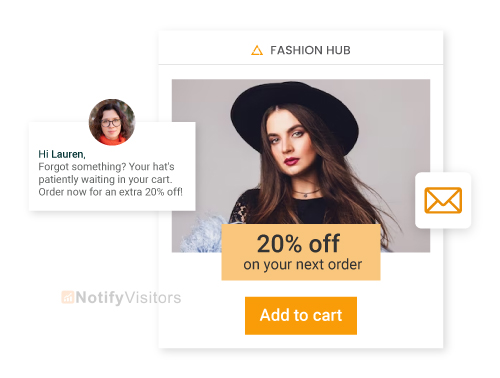
Automation is a key component of a successful WooCommerce email marketing strategy. By automating your email campaigns, you can save time and resources while delivering timely and personalized messages to your customers.
Here are some examples of automated emails you can set up:
- Abandoned Cart Recovery: Set up automated emails to remind customers about their abandoned carts and offer incentives to encourage them to complete the purchase.
- Welcome Series: Create a series of automated emails to welcome new customers, introduce your brand, and provide valuable information or special offers.
- Upselling and Cross-Selling: Send automated emails with personalized product recommendations based on customer purchase history or browsing behavior to encourage additional purchases.
- Order Follow-Up: Automate emails to provide order confirmations, shipping updates, and delivery notifications to keep customers informed about their purchases.
- Re-engagement Campaigns: Set up automated emails to target inactive or lapsed customers with special offers or personalized recommendations to encourage them to return to your store.
By automating your email campaigns, you can deliver relevant messages at the right time, increasing customer engagement, and driving conversions.
d) Compliance and Best Practices
When conducting email marketing, it’s important to ensure compliance with regulations such as the CAN-SPAM Act (in the US) and the GDPR (in the EU). Here are some best practices to follow:
- Clear Opt-Out: Include an easy-to-find unsubscribe link in every email to allow recipients to opt out of future communications.
- Sender Information: Provide clear and accurate sender information in your emails, including your company name and contact details.
- Consent-Based Marketing: Ensure that you have obtained explicit consent from customers before adding them to your email list. This can be done through opt-in forms or checkboxes during the checkout process.
- Personal Data Protection: Respect customer privacy and safeguard their personal data in accordance with applicable regulations. Be transparent about how you collect, store, and use customer data.
- Frequency and Timing: Be mindful of the frequency and timing of your emails to avoid overwhelming your subscribers. Experiment with different sending times to determine the optimal schedule for your audience.
e) Analyzing and Improving Campaigns
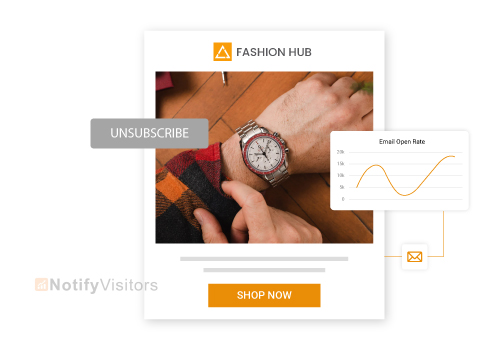
Analyzing the performance of your WooCommerce email campaigns is crucial for continuous improvement. Here are some key metrics to track:
- Open Rate: Measure the percentage of recipients who open your emails. A higher open rate indicates that your subject lines and sender information are engaging and compelling.
- Click-Through Rate (CTR): Track the percentage of recipients who click on the links in your emails. A higher CTR indicates that your content and calls to action are effective in driving engagement. For example, ‘Build Your Dream Tiny House’ and discover what counties in New Jersey allow tiny houses.
- Conversion Rate: Measure the percentage of recipients who complete a desired action, such as making a purchase or signing up for a newsletter. A higher conversion rate indicates that your emails are successfully driving desired outcomes.
- Bounce Rate: Monitor the percentage of emails that are returned as undeliverable. A high bounce rate may indicate issues with your email list quality or deliverability.
- Unsubscribe Rate: Keep an eye on the percentage of recipients who unsubscribe from your emails. A high unsubscribe rate may indicate that your content or frequency is not aligned with subscribers’ expectations.
By regularly analyzing these metrics, you can identify trends, preferences, and areas for improvement. Experiment with different subject lines, content formats, and calls-to-action to optimize your email campaigns for better results.
9 Best Practices of WooCommerce Email Marketing
To make your WooCommerce email campaigns more effective, consider implementing the following best practices:
1. Crafting Attention-Grabbing Subject Lines
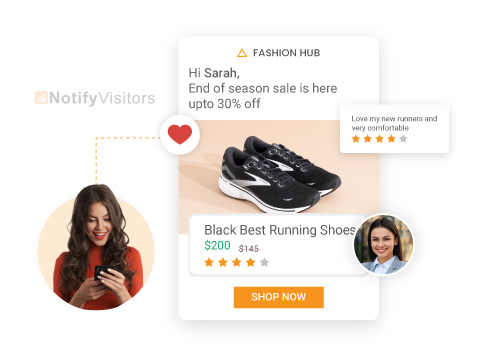
The subject line is the first thing recipients see in their inbox, so it’s crucial to craft attention-grabbing subject lines that entice them to open your emails. Consider the following techniques:
- Personalization: Incorporate the recipient’s name or other relevant details in the subject line to make it more personalized and engaging.
- Urgency or Scarcity: Create a sense of urgency or scarcity with phrases like “Limited Time Offer” or “Last Chance to Save.”
- Benefit-Oriented: Highlight the benefits recipients will gain from opening your email, such as exclusive discounts or access to valuable content.
- Curiosity: Pose intriguing questions or tease captivating content to pique recipients’ curiosity and encourage them to open your email.
- Social Proof: Reference positive customer reviews or feature popular products to build trust and credibility.
2. Designing Engaging Email Templates
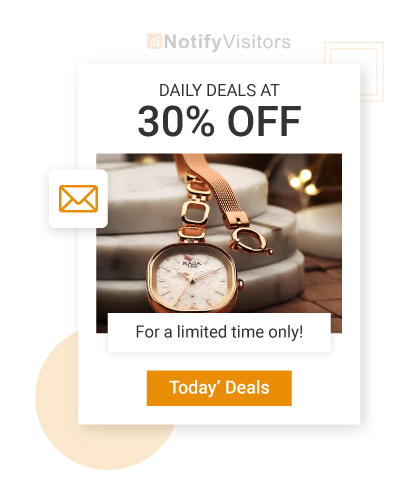
Visual appeal plays a crucial role in the effectiveness of your WooCommerce email campaigns. Consider the following tips for designing engaging email templates:
- Responsive Design: Ensure that your email templates are responsive and compatible with different devices and screen sizes. This ensures a consistent and enjoyable experience for recipients.
- Customizability: Choose email templates that allow you to customize the design to align with your brand’s look and feel. This includes the ability to change colors, fonts, and layouts.
- Clear Hierarchy: Design your email templates with a clear and easy-to-follow layout and content flow. Use headings, subheadings, and bullet points to enhance readability.
- Image-to-Text Ratio: Strike a balance between images and informative text in your email templates. Too many images may cause deliverability issues, while too much text may overwhelm recipients.
- Prominent Calls-to-Action (CTAs): Make your CTAs stand out by using contrasting colors, larger fonts, or buttons. Clearly guide recipients on the desired action you want them to take.
3. Persuasive Copy
Compelling copy is essential for engaging recipients and driving action in your WooCommerce email campaigns. Consider the following tips for persuasive copywriting:
- Understand Your Audience: Tailor your email copy to resonate with your specific audience’s needs, preferences, and pain points. Speak their language and address their concerns directly.
- Engaging Introduction: Capture recipients’ attention with an engaging introduction that clearly explains the benefits they’ll gain from reading your email. Avoid jargon or complicated language.
- Subheadings and Bullet Points: Break up your email copy into easily digestible sections with subheadings and bullet points. This enhances readability and allows recipients to quickly scan the content. You can use an AI bullet point generator to create content in structured bulleted format.
- Motivate Action: Include a strong call-to-action (CTA) in your email copy to guide recipients on what to do next. Use action-oriented language and highlight the value or benefits they’ll receive by taking action.
- Share Stories and Testimonials: Incorporate relatable stories or customer testimonials to build trust and credibility. This helps recipients connect with your brand and products on a more personal level.
4. Calls-to-Action
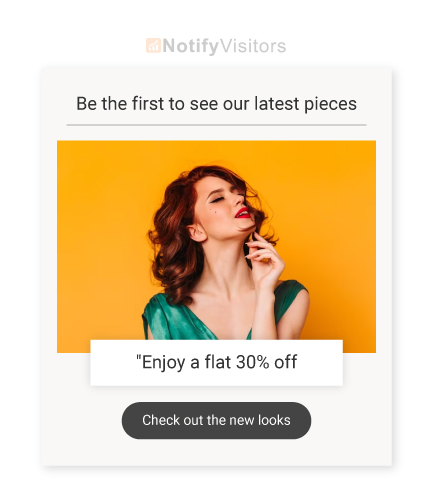
Calls-to-action (CTAs) are crucial for driving engagement and conversions in your WooCommerce email campaigns. Consider the following tips for creating effective CTAs:
- Action-Oriented Text: Use clear and compelling verbs in your CTAs, such as “Shop,” “Learn,” or “Get Started.” This encourages recipients to take immediate action.
- Value Proposition: Highlight the benefits or value recipients will gain by clicking on your CTA. Clearly communicate the desired outcome or result.
- Design Distinction: Make your CTAs visually distinct from the surrounding content by using contrasting colors, larger fonts, or buttons. This helps them stand out and catch recipients’ attention.
- Color Contrast: Choose a color for your CTA that contrasts with the background to ensure it’s easily noticeable. This helps draw attention and encourages clicks.
- Positioning: Place your CTAs strategically within your email, such as at the end of a section or at the bottom of the email. Ensure they’re easily noticeable and accessible.
5. Timing and Frequency
The timing and frequency of your WooCommerce emails can significantly impact engagement and conversions. Consider the following tips for finding the optimal sending times:
- Experiment with Timing: Test different sending times to determine when your audience is most likely to engage with your emails. This may vary depending on factors such as time zones, demographics, and industry.
- Consider Open and Click Rates: Monitor your email open and click rates to identify patterns and trends. Analyze the data to determine when recipients are most active and adjust your sending times accordingly.
- Be Mindful of Frequency: Avoid overwhelming your subscribers with too many emails. Find the right balance between staying top of mind and respecting recipients’ inboxes.
6. Segmentation and Personalization
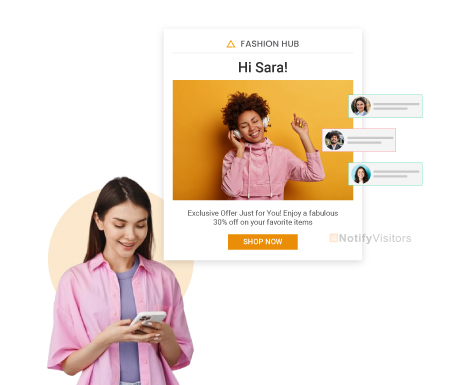
Segmentation and personalization are key strategies for delivering targeted and relevant content in your WooCommerce email campaigns. Consider the following tips:
- Segment Your Audience: Divide your email list into smaller groups based on customer preferences, demographics, purchase history, or browsing behavior. This allows you to send more personalized and targeted emails.
- Personalize Your Emails: Use customer attributes, such as names, locations, or order history, to personalize your emails. Address recipients by their names and tailor the content to their specific interests or preferences.
- Avoid Generic Content: Ensure that your emails are highly relevant and tailored to each segment. Avoid sending generic content that may not resonate with recipients or provide value.
7. Avoid Using “No-Reply” Email Address
To encourage communication and foster a sense of approachability, avoid using a “no-reply” email address in your WooCommerce store emails.
Instead, use a sender address that allows recipients to reply and engage with your emails. This humanizes your brand and demonstrates that you value customer interaction.
8. Provide Value
Customers are more likely to engage with your emails if they perceive them as valuable. Offer exclusive promotions, discounts, or limited-time offers to reward loyal customers.
Share valuable content, such as informative blog posts, industry insights, or relevant tips, to establish your brand as a trusted source of information. Consistently providing value in your emails increases customer satisfaction and the likelihood of repeat purchases.
9. Mobile Optimization
With the increasing use of mobile devices, it’s crucial to optimize your WooCommerce email templates for mobile viewing. Ensure that your emails are responsive and adapt to different screen sizes.
Keep the content concise and easy to read, avoiding lengthy paragraphs or tiny fonts that may be challenging to read on smaller screens.
Test your emails on different devices and email clients to ensure a smooth and enjoyable experience for all recipients.
Best Email Marketing Plugins for WooCommerce
Implementing a robust email marketing strategy for your WooCommerce store requires the right tools and plugins. Here are some top email marketing plugins specifically designed for WooCommerce:
1.NotifyVisitors
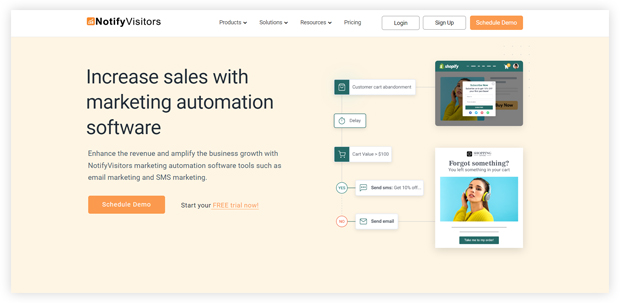
NotifyVisitors is a powerful WooCommerce email marketing plugin that offers predefined workflows for automation. It allows you to customize every aspect of your emails, from content to templates.
With features like segmentation, drag and drop editor, A/B testing and many more. NotifyVisitors helps you engage customers throughout their shopping journey and boost sales.
2. HubSpot for WooCommerce

HubSpot is a comprehensive marketing platform that integrates seamlessly with WooCommerce. It provides tools for personalized marketing campaigns, customer segmentation, and sales and marketing analytics.
With HubSpot, you can automate abandoned cart recovery, sync customer data, and optimize your email campaigns for better results.
3. Mailchimp for WooCommerce
Mailchimp is a widely popular email marketing platform that offers integration with WooCommerce. It allows you to sync customer data, segment your audience, and send personalized product recommendations.
With Mailchimp, you can also set up automated abandoned cart emails, track campaign performance, and leverage pre-built templates for responsive email designs.
These plugins offer a range of features to enhance your WooCommerce email marketing efforts. Choose the one that best aligns with your needs and budget to automate and optimize your email campaigns.
Conclusion
Implementing an effective email marketing strategy is vital for the success of your WooCommerce store. By leveraging the power of email, you can engage your customers, drive conversions, and foster long-term loyalty. This ultimate beginner’s guide has provided you with insights into the benefits of WooCommerce email marketing, the types of emails you can send, best practices, and top plugins for automation.
Remember to craft attention-grabbing subject lines, design engaging email templates, provide value, and personalize your emails to create a compelling customer experience. By automating your email campaigns, ensuring compliance with regulations, and analyzing performance, you can continuously improve your WooCommerce email marketing efforts and achieve better results.With the right tools and strategies in place, your WooCommerce email marketing campaigns will drive revenue, boost customer engagement, and contribute to the growth of your online business.

























 Email
Email SMS
SMS Whatsapp
Whatsapp Web Push
Web Push App Push
App Push Popups
Popups Channel A/B Testing
Channel A/B Testing  Control groups Analysis
Control groups Analysis Frequency Capping
Frequency Capping Funnel Analysis
Funnel Analysis Cohort Analysis
Cohort Analysis RFM Analysis
RFM Analysis Signup Forms
Signup Forms Surveys
Surveys NPS
NPS Landing pages personalization
Landing pages personalization  Website A/B Testing
Website A/B Testing  PWA/TWA
PWA/TWA Heatmaps
Heatmaps Session Recording
Session Recording Wix
Wix Shopify
Shopify Magento
Magento Woocommerce
Woocommerce eCommerce D2C
eCommerce D2C  Mutual Funds
Mutual Funds Insurance
Insurance Lending
Lending  Recipes
Recipes  Product Updates
Product Updates App Marketplace
App Marketplace Academy
Academy


